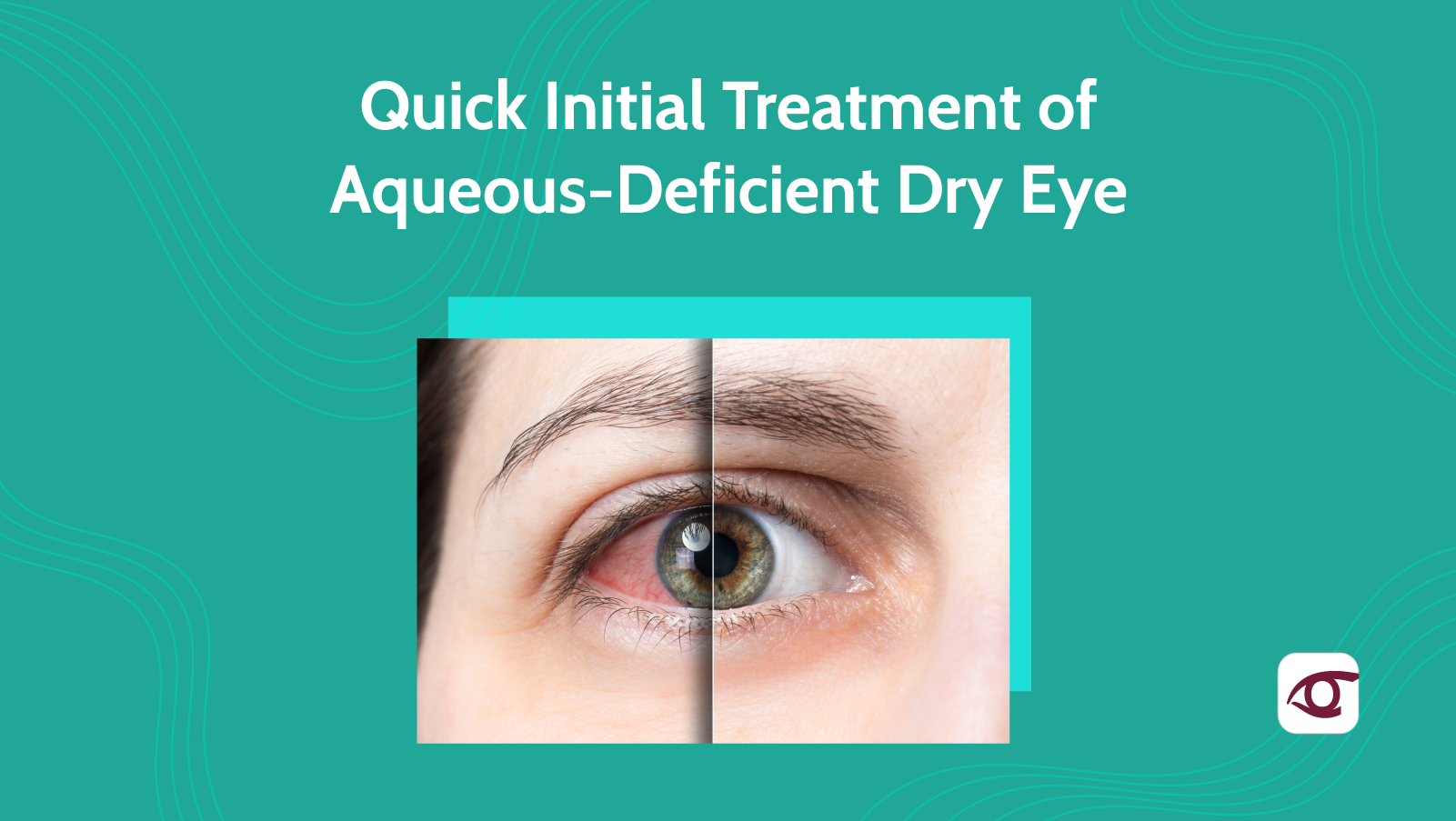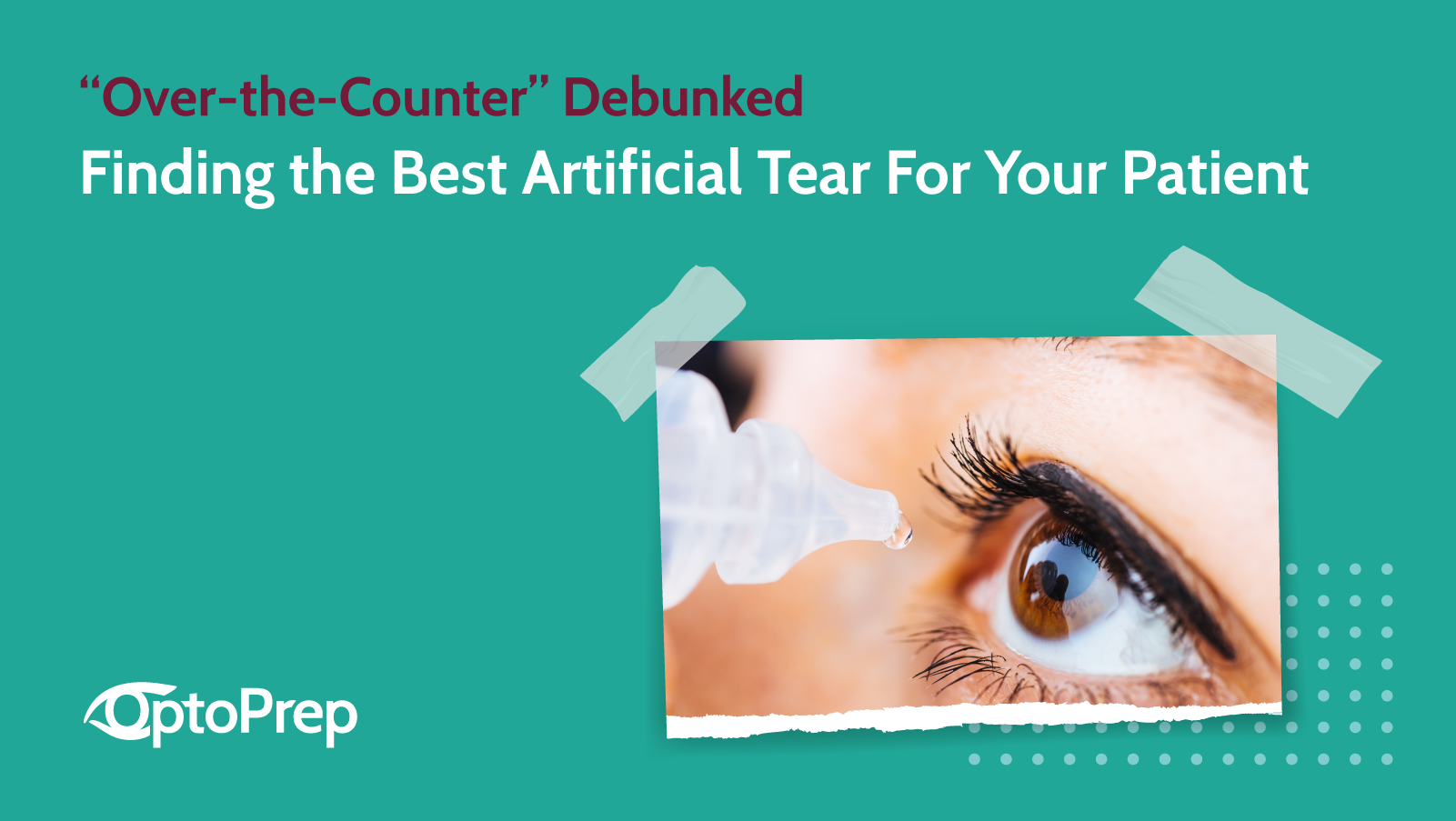You’ve already determined that your patient has aqueous deficient dry eye, now what? For years and years, doctors have prescribed artificial tears as a first-line treatment for aqueous-deficient dry eye (ADDE). However, in recent years, advancements in dry eye research have introduced brand new prescribing patterns for ADDE.
Follow Us
Quick Initial Treatment of Aqueous-Deficient Dry Eye
Topics: Dry Eye
“Over-the-Counter” Debunked: Finding the Best Artificial Tear For Your Patient
Artificial tears are a very common treatment for all kinds of dry eye disease. In fact, they can be considered a first line treatment since many patients go out and purchase them over-the-counter for relief before consulting with a doctor. These drops are great at alleviating most symptoms of mild to moderate dry eye disease with very minimal side effects.
However, these drops are not created equally: each manufacturer uses their own technology to manufacture their version of the most effective artificial tear for multipurpose dry eye relief. Here we will compare common ingredients, including preservatives, to help you differentiate which artificial tear is right for your patients.
All of the ingredients used in the manufacturing of artificial tears should be considered when treating a patient’s dry eye disease (DED). Not every dry eye is the same, and not every artificial tear is made the same. Some active ingredients may be useful for aqueous deficient dry eye, others may be useful for evaporative dry eye. Also, some preservatives can impact the treatment process.
Topics: Dry Eye, Eye Drops, Artificial Tear


